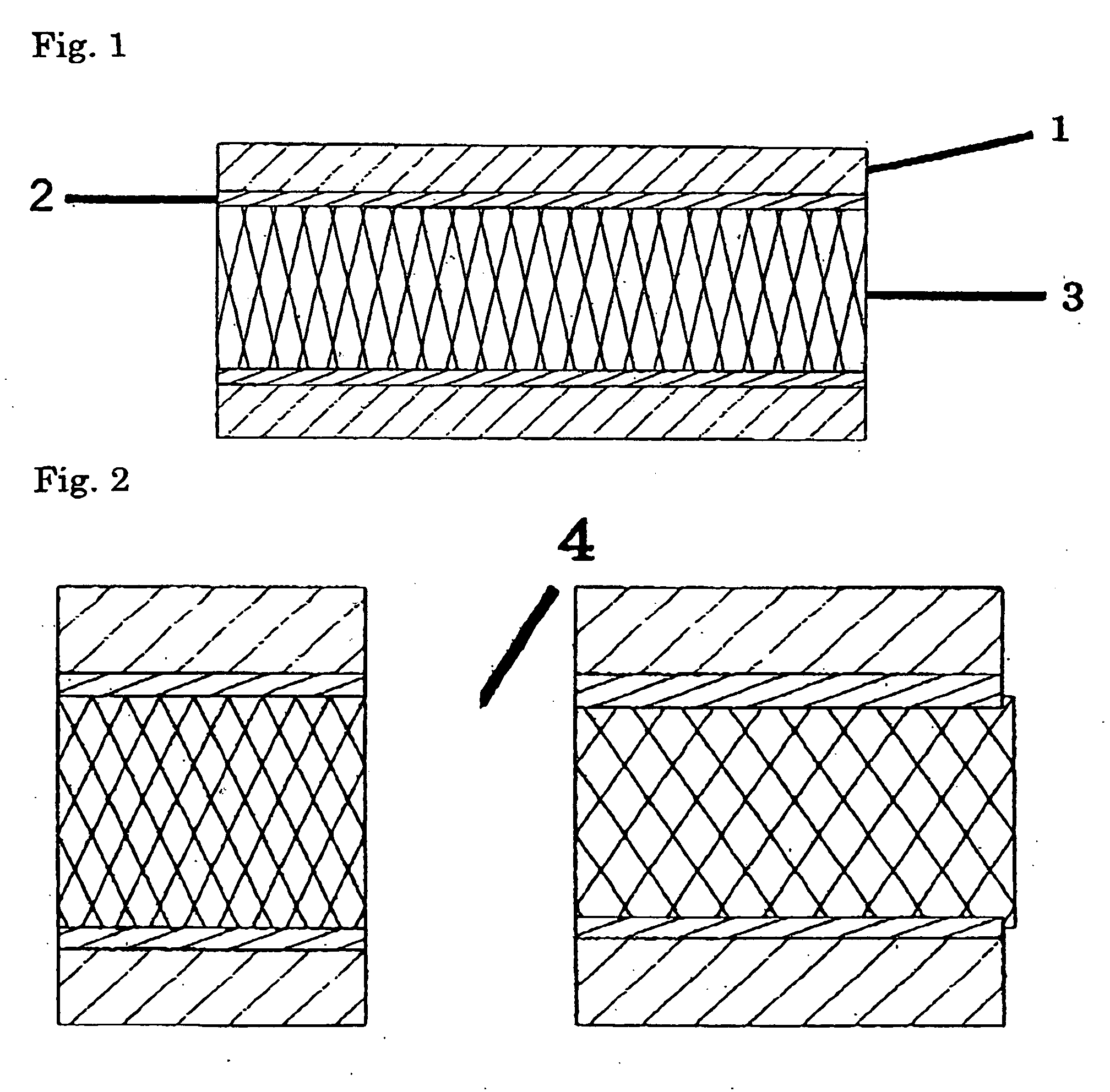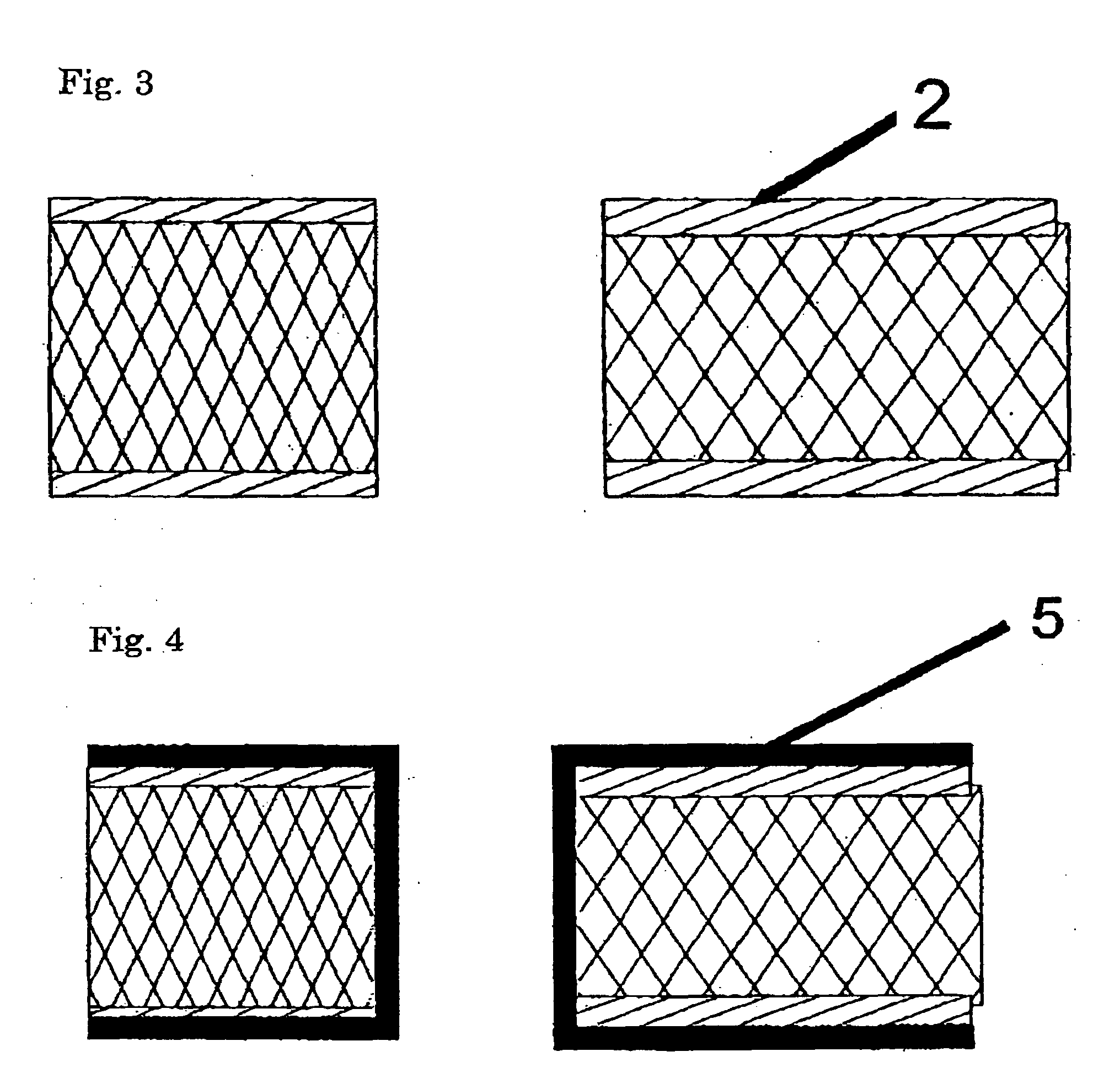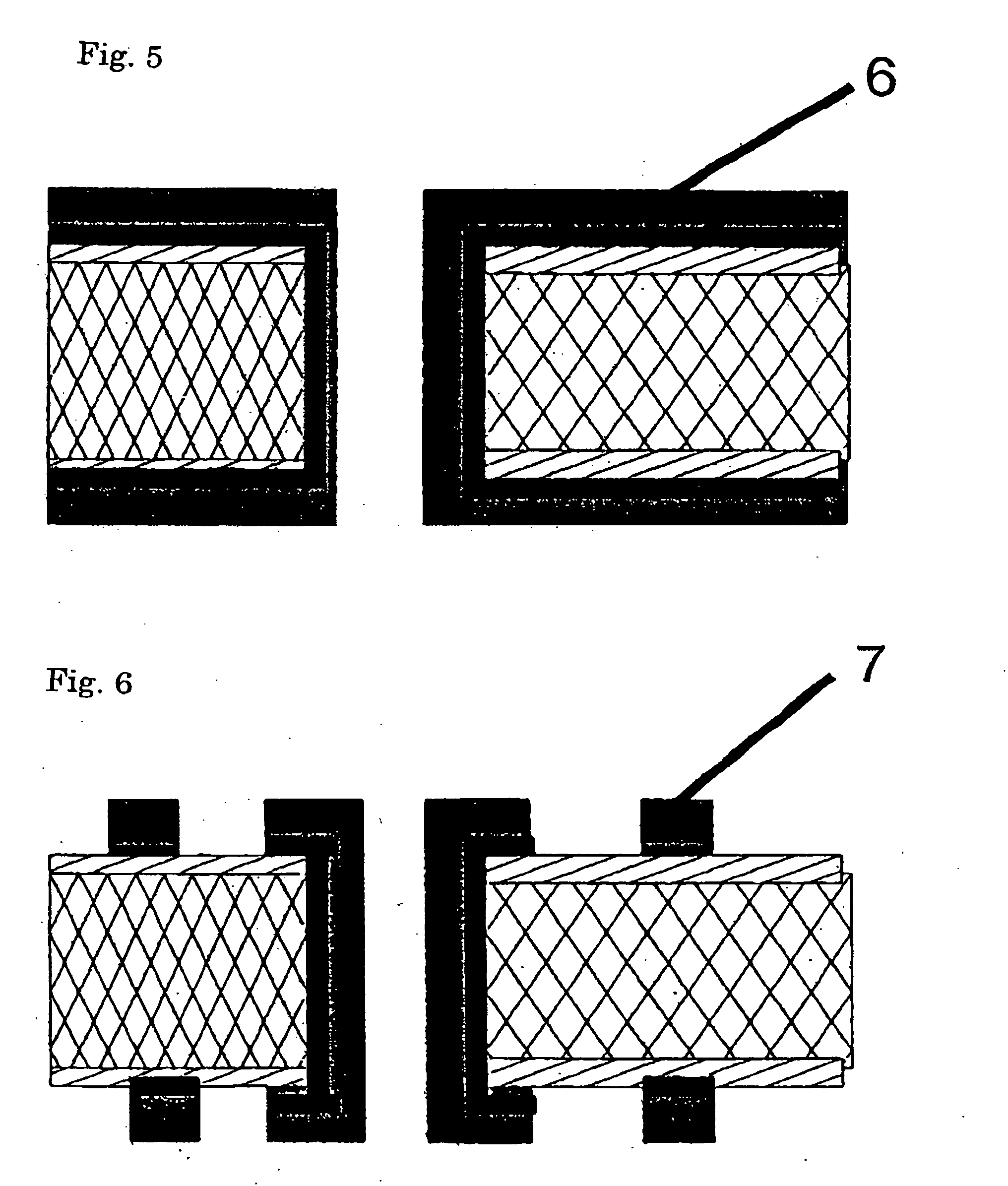Resin composite copper foil, printed wiring board, and production processes thereof
a technology of printed wiring boards and composite copper foils, which is applied in the direction of resistive material coating, synthetic resin layered products, metallic material coating processes, etc., can solve the problems of obstructing the formation of ultra-fine lines, reducing the location accuracy or adhesive strength of the circuit, and lack of adhesive strength of the fine circuit, etc., to achieve excellent heat resistance and heat resistance, excellent adhesive strength, and small roughness
- Summary
- Abstract
- Description
- Claims
- Application Information
AI Technical Summary
Benefits of technology
Problems solved by technology
Method used
Image
Examples
examples
[0052]The present invention will be specifically explained with reference to Synthetic Example, Comparative Synthetic Example, Examples and Comparative Examples, hereinafter.
Synthetic Example
[0053]A 2-liter three-necked flask having an anchor type stirring rod made of stainless steel, a trap equipped with a nitrogen-introducing tube and a stopcock, and a reflux condenser having a cooling tube with a ball, installed on the trap, was charged with 117.68 g (400 mmol) of 3,4,3′,4′-biphenyltetracarboxylic dianhydride, 87.7 g (300 mmol) of 1,3-bis(3-aminophenoxy)benzene, 4.0 g (40 mmol) of γ-valerolactone, 4.8 g (60 mmol) of pyridine, 300 g of N-methyl-2-pyrrolidone (to be referred to as “NMP” hereinafter) and 20 g of toluene. The mixture was heated at 180° C. for 1 hour and then cooled down to about room temperature. 29.42 g (100 mmol) of 3,4,3′,4′-biphenyltetracarboxylic dianhydride, 82.12 g (200 mmol) of 2,2-bis{4-(4-aminophenoxy)phenyl}propane, 200 g of NMP and 40 g of toluene were ad...
examples 1-4
[0055]The block copolymer polyimide solution obtained in Synthetic Example was further diluted with NMP to prepare a block copolymer polyimide solution having a solid content of 10%. This block copolymer polyimide solution and bis(4-maleimidophenyl)methane (BMI-H, supplied by K I KASEI KK) were molten and mixed at 60° C. for 20 minutes in accordance with solid content weight ratios shown in Table 1, thereby preparing resin solutions respectively. The thus-prepared resin solutions were respectively applied to a mat surface of an electrolytic copper foil (F0-WS foil, Rz=1.5 μm, supplied by Furukawa circuit foil Co., Ltd.) having a thickness of 12 μm with a reverse roll coating machine, then dried under a nitrogen atmosphere at 120° C. for 3 minutes and 160° C. for 3 minutes and then lastly heat-treated at 300° C. for 2 minutes, thereby preparing resin composite copper foils respectively. On the other hand, 400 g of 2,2-bis(4-cyanatophenyl)propane was molten at 150° C. and allowed to r...
example 5
[0056]A resin composite copper foil and a copper-clad laminate were produced in the same manner as in Example 3 except that a resin solution was prepared by using 2,2-bis[4-(4-maleimidophenoxy)phenyl]propane (BMI-80, supplied by K I KASEI KK) in place of bis(4-maleimidophenyl)methane used in Example 3. Table 1 shows the evaluation results.
TABLE 1Evaluation ResultsEx. 1Ex. 2Ex. 3Ex. 4Ex. 5ResinBlock copolymer8065502550compositepolyimidecopperMaleimide20355075—foilcompound BMI-HMaleimide————50compound BMI-80Total thickness1615151515(μm)Copper foil adhesive strength1.291.441.731.751.73(kg / cm)Heat240° C. treatment∘∘∘∘∘∘∘∘∘∘∘∘∘∘∘resistance280° C. treatment∘∘x∘∘∘∘∘∘∘∘∘∘∘∘in airHeat1 hour∘∘∘∘∘∘∘∘∘∘∘∘∘∘∘resistance3 hours∘∘∘∘∘∘∘∘∘∘∘∘∘∘∘after5 hours∘∘∘∘∘∘∘∘∘∘∘∘∘∘∘moisture7 hours∘∘∘∘∘∘∘∘∘∘∘∘∘∘∘absorptionEx. = Example
PUM
| Property | Measurement | Unit |
|---|---|---|
| thickness | aaaaa | aaaaa |
| width | aaaaa | aaaaa |
| temperature | aaaaa | aaaaa |
Abstract
Description
Claims
Application Information
 Login to View More
Login to View More - R&D
- Intellectual Property
- Life Sciences
- Materials
- Tech Scout
- Unparalleled Data Quality
- Higher Quality Content
- 60% Fewer Hallucinations
Browse by: Latest US Patents, China's latest patents, Technical Efficacy Thesaurus, Application Domain, Technology Topic, Popular Technical Reports.
© 2025 PatSnap. All rights reserved.Legal|Privacy policy|Modern Slavery Act Transparency Statement|Sitemap|About US| Contact US: help@patsnap.com



